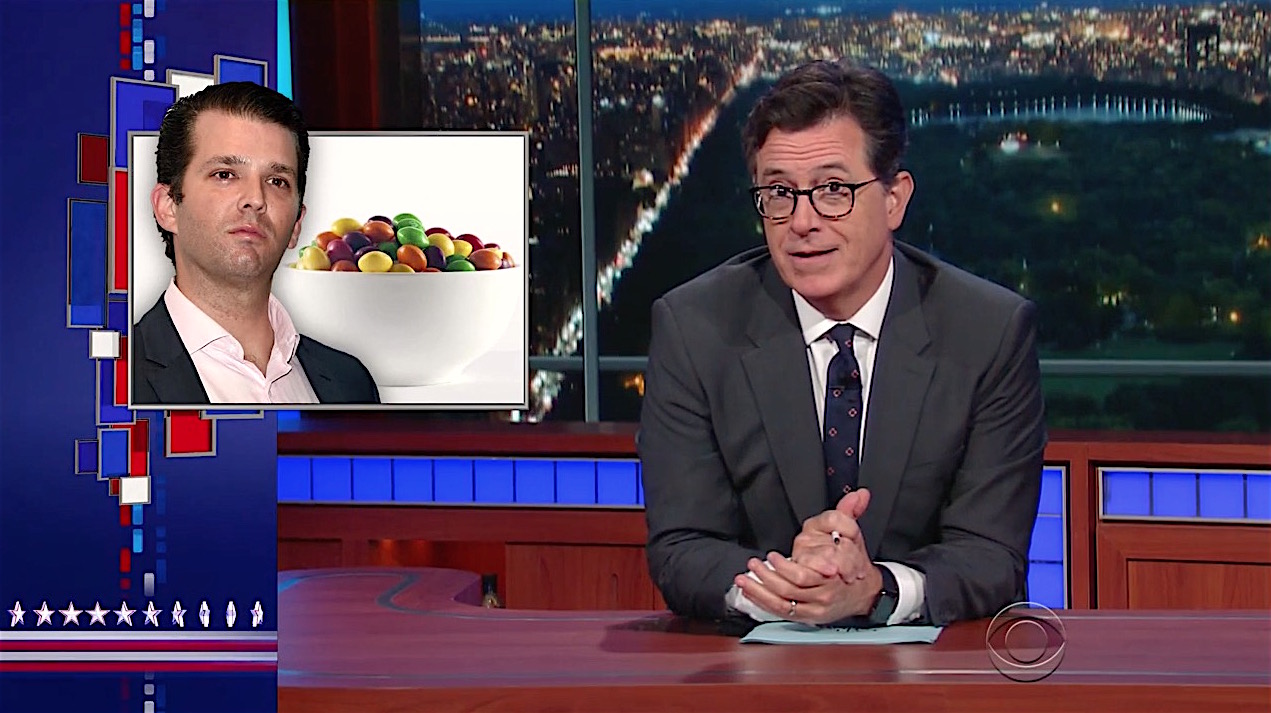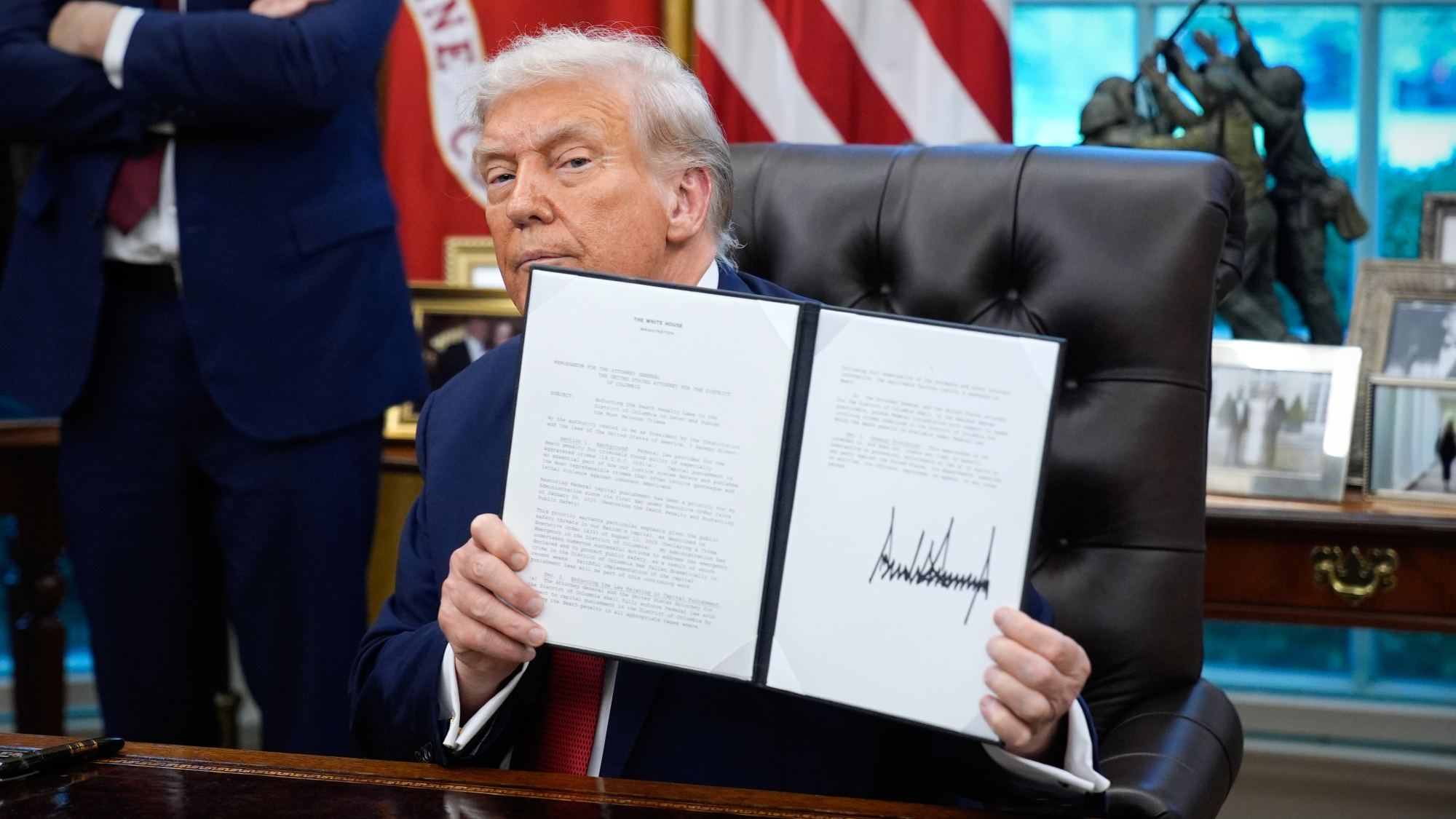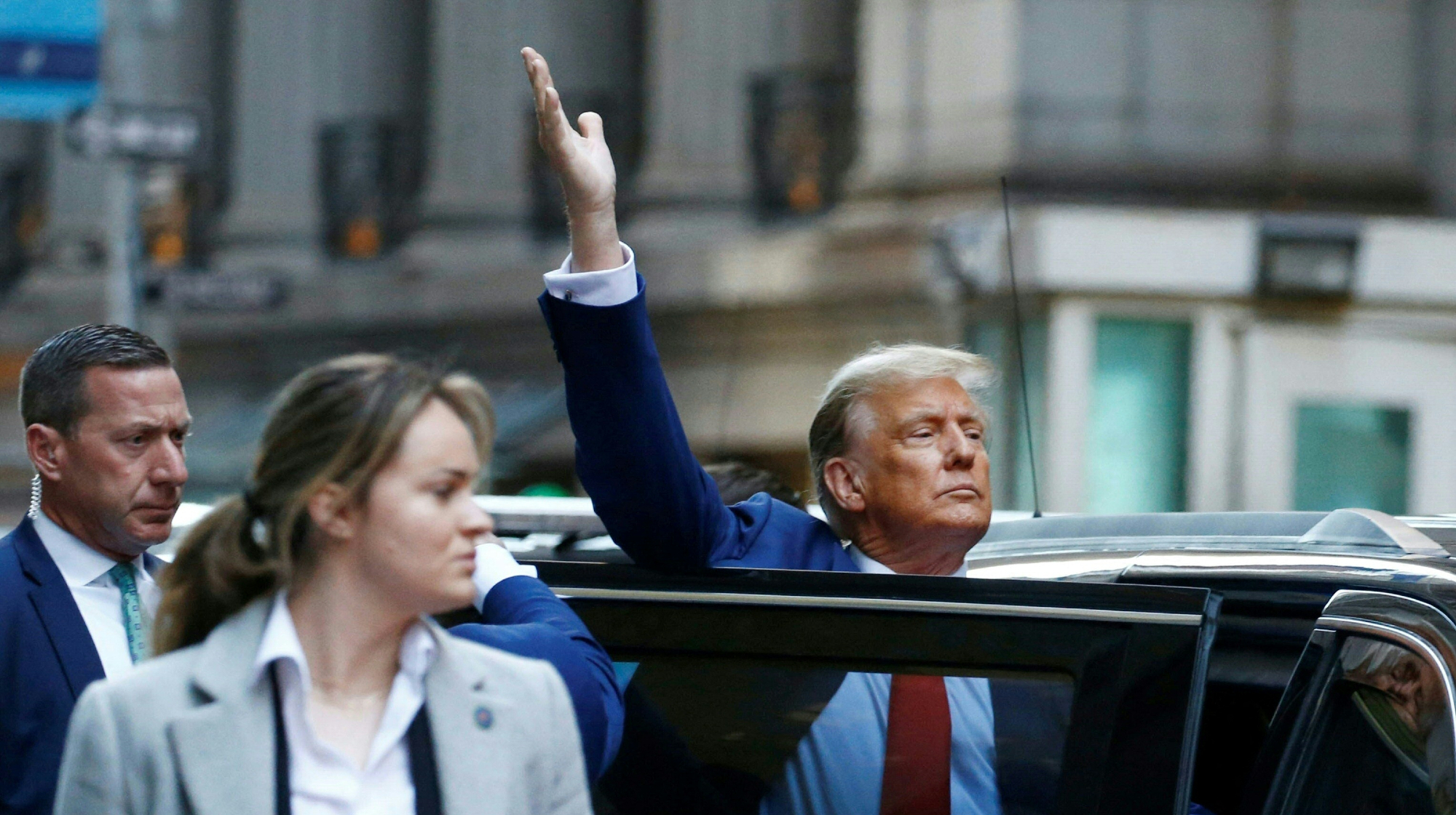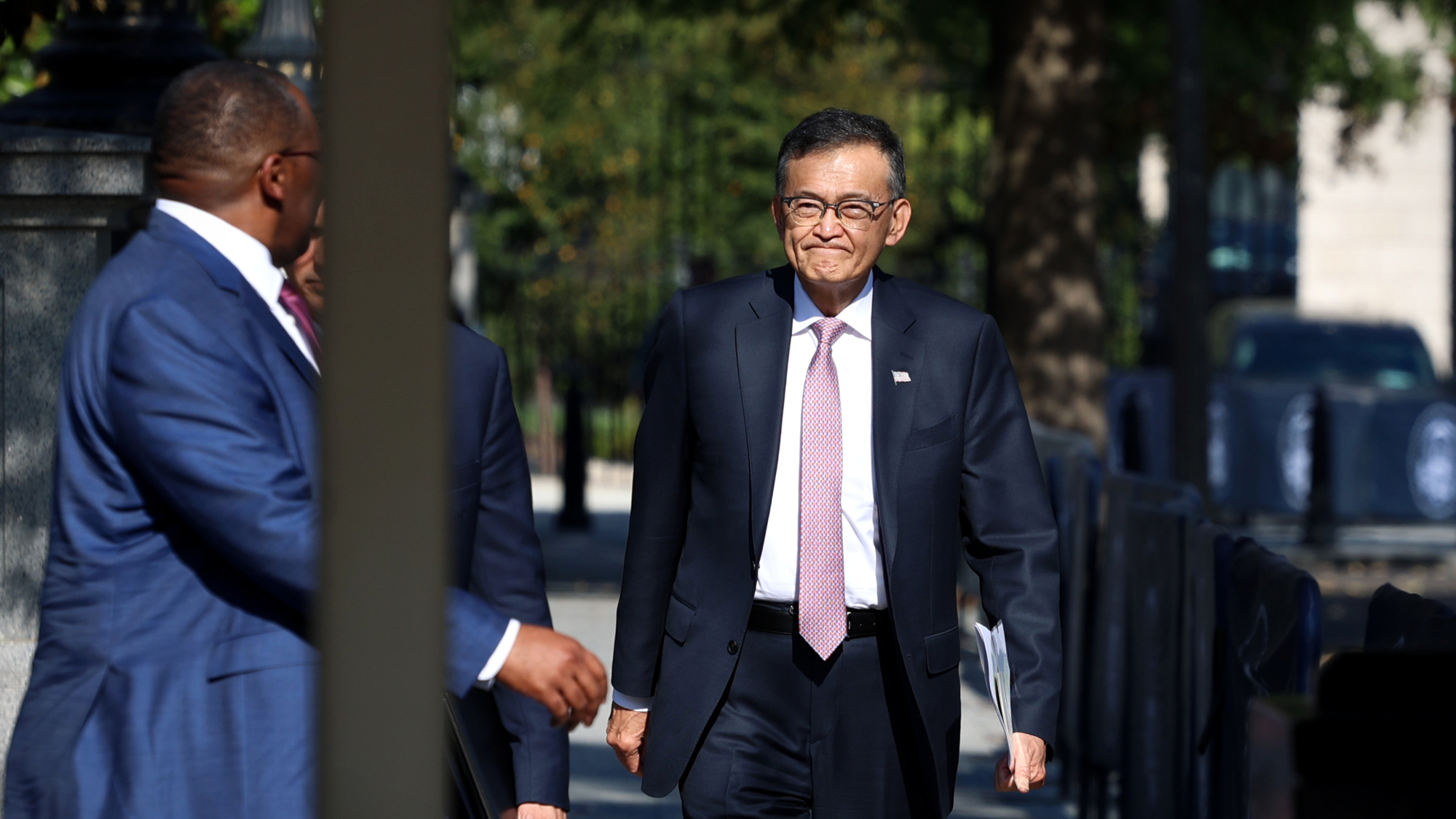Stephen Colbert explains everything that's wrong with Trump Jr.'s Skittles meme


On Monday night, Donald Trump Jr. — adviser to and eldest son of GOP presidential nominee Donald Trump — tweeted an image comparing refugees to poison Skittles, drawing protests from the company that makes Skittles and the refugee who snapped the photo in the meme, and outrage from lots of other people. On Tuesday, Donald Trump's running mate Gov. Mike Pence said he did not understand all the "outrage about a metaphor used by Don Jr.," and on Tuesday's Late Show, Stephen Colbert counted the ways. "That's a powerful metaphor," he began. "It really makes me reconsider my stance on eating Syrian refugees."
Colbert started with the grammar in the image, especially, "If I told you that just three would kill you." "That's not right," he said. "As in, if you think that's a complete sentence, you've got your head up your." "But "also, it turns out the math is wrong," Colbert said. The odds of being killed by a refugee in the U.S. has been calculated at 1 in 3.64 billion, "so that's not three poison Skittles in a bowl, that's three poison Skittles in one and a half Olympic-size swimming pools of Skittles — and yes, for the record, I would eat all of them."
"Worst of all, this meme isn't even original," Colbert said, tracing its origins to a feminist idea using M&Ms. "Of course, the Trump family prefers Skittles, because there are no brown ones." Then he got down to "the real problem with the graphic: It compares refugees fleeing their war-torn country to pieces of sugar. These are people who dream of living in a country where food is so plentiful we waste our candy on metaphors." If none of that was persuasive enough, Colbert said, "let me explain to Donald Trump Jr. why he's wrong in language he can understand." It's pretty sweet. Watch below. Peter Weber
The Week
Escape your echo chamber. Get the facts behind the news, plus analysis from multiple perspectives.

Sign up for The Week's Free Newsletters
From our morning news briefing to a weekly Good News Newsletter, get the best of The Week delivered directly to your inbox.
From our morning news briefing to a weekly Good News Newsletter, get the best of The Week delivered directly to your inbox.
A free daily email with the biggest news stories of the day – and the best features from TheWeek.com
Peter has worked as a news and culture writer and editor at The Week since the site's launch in 2008. He covers politics, world affairs, religion and cultural currents. His journalism career began as a copy editor at a financial newswire and has included editorial positions at The New York Times Magazine, Facts on File, and Oregon State University.
-
 TikTok secures deal to remain in US
TikTok secures deal to remain in USSpeed Read ByteDance will form a US version of the popular video-sharing platform
-
 Unemployment rate ticks up amid fall job losses
Unemployment rate ticks up amid fall job lossesSpeed Read Data released by the Commerce Department indicates ‘one of the weakest American labor markets in years’
-
 US mints final penny after 232-year run
US mints final penny after 232-year runSpeed Read Production of the one-cent coin has ended
-
 Warner Bros. explores sale amid Paramount bids
Warner Bros. explores sale amid Paramount bidsSpeed Read The media giant, home to HBO and DC Studios, has received interest from multiple buying parties
-
 Gold tops $4K per ounce, signaling financial unease
Gold tops $4K per ounce, signaling financial uneaseSpeed Read Investors are worried about President Donald Trump’s trade war
-
 Electronic Arts to go private in record $55B deal
Electronic Arts to go private in record $55B dealspeed read The video game giant is behind ‘The Sims’ and ‘Madden NFL’
-
 New York court tosses Trump's $500M fraud fine
New York court tosses Trump's $500M fraud fineSpeed Read A divided appeals court threw out a hefty penalty against President Trump for fraudulently inflating his wealth
-
 Trump said to seek government stake in Intel
Trump said to seek government stake in IntelSpeed Read The president and Intel CEO Lip-Bu Tan reportedly discussed the proposal at a recent meeting



